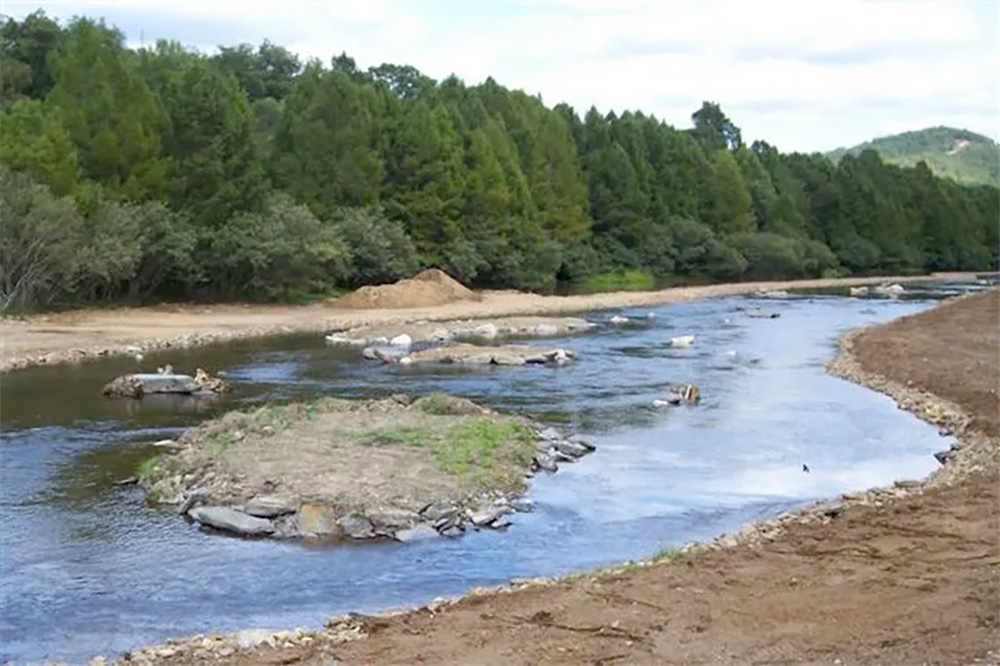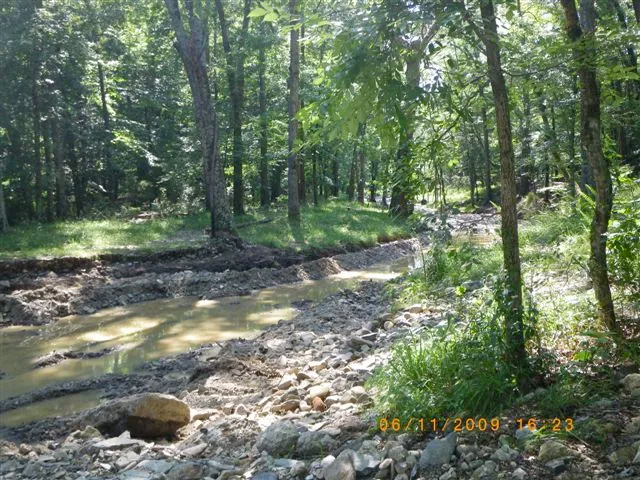

Back in 2005/2006 the ODWC with financial support from the LMFRF and other entities started work on the most ambitious project done on the LMFR. They began to transform 1800 feet of shallow warm water of the original river bed into more favorable trout water. The area known as the Evening Hole was not much when it came to fishing. Wide, shallow, slow, and full of muck. It was the first section of riverbed that Spillway creek went into. It widened from 20 feet to 200 feet. The water slowed and the detritus all fell to the bottom. In the summer it was known to have temperatures in the 80’s and virtually ended all the trout water downstream until the cooler fall weather came.
The ODWC narrowed and dredged the channel and constructed an area wetlands for biodiversity. In the main channel they added shelter and plant life. This had the effect of increasing flow so that the water did not have time to warm and the silt did not have time to fall out. About the same time, Paul Balkenbush and James Vincent (who were heading the project for the ODWC) found an adjacent water path covered in the woods. They dug this out connecting it from the Cold Hole to the top of the Evening Hole. This became Lost Creek. A completely different type of trout water that we didn’t have before.
The results were that they managed to take 1800 feet of bad river and turn it into 3000 feet of some of the best water the LMFR has to offer. The cost of the project was $115,000.00
As thanks to the efforts of the LMFRF and the other fly fishing organizations that helped on this, the ODWC deemed that stretch of the river to become a Red Zone Area with all the rules and regulations that apply. Although the Evening Hole is popular with beginners for it’s openness and ease of casting, the slow current and clear water make for some of the most technical water to be found on the river.
